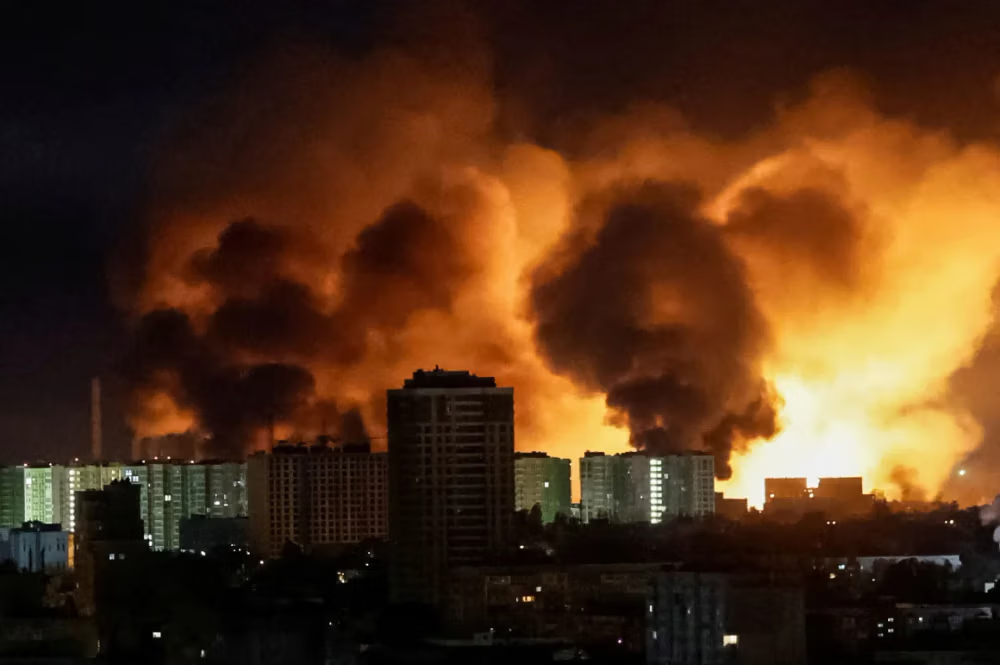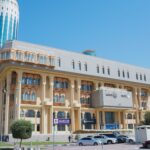Russia has significantly escalated its missile and drone attacks across Ukraine in recent weeks, with Ukrainian officials and analysts warning that these bombardments are aimed at weakening civilian morale. At the same time, Moscow is ramping up ground offensives along several points of the sprawling frontline.
Some of these ground assaults have forced Ukrainian units in Donetsk and northern regions to withdraw from certain positions, and parts of the rural south have also fallen into Russian hands. However, Ukraine’s growing use of drones in layered formations has allowed it to inflict substantial losses on Russian forces while keeping its own casualties low. These unmanned aerial systems are becoming an increasingly critical component of Ukraine’s defense strategy.
Ukrainian officials are working to expand domestic drone production and build what they describe as a “drone wall” — defensive corridors that can help repel Russian advances.
Meanwhile, ignoring US President Donald Trump’s efforts to secure a ceasefire, the Kremlin is pressing forward with a dual approach: intensifying aerial bombardments while attempting to gradually erode Ukrainian defenses on the ground.
Russia has rapidly scaled up production of missiles and drones, enabling mass attacks involving hundreds of projectiles. Its strategy includes overwhelming Ukrainian air defenses with waves of cheap drones to make way for successful missile strikes.
On the ground, Russian troops are probing defenses all along the front, from Zaporizhzhia in the south to Sumy in the north. These incursions are small and tactical, with troops using motorbikes, cars, and small infantry groups to seize territory in rural areas and abandoned villages. Rather than sweeping breakthroughs, they are “gnawing away” at Ukrainian lines.
According to the Washington-based Institute for the Study of War (ISW), Russian forces have advanced by an average of 14 square kilometers per day this year. At this pace, it would take Russia nearly four more years to fully occupy the four regions it has claimed — Donetsk, Luhansk, Zaporizhzhia, and Kherson.
Despite these slow gains, Russia aims to project dominance and demoralize Ukraine’s allies. Much of the fighting remains centered in Donetsk, where Russian forces are still striving to take the entire region. Ukrainian President Volodymyr Zelensky has ruled out the idea of ceding territory through negotiations.
On Tuesday, Russia’s Defense Ministry claimed that a village south of the key town of Kostiantynivka had been captured. ISW estimates that Russia has seized about 65 square kilometers in recent operations but lacks the capability to launch full-scale offensives in multiple directions simultaneously.
“The main Russian effort into the summer will once again be against the key towns of Kostyantynivka and Pokrovsk” in Donetsk, said Jack Watling, senior research fellow at the Royal United Services Institute (RUSI) in London.
In northern Ukraine, Russian troops have advanced slightly into the Sumy region. On Tuesday, Zelensky told journalists, “The Russians are now amassing troops in the Sumy direction. More than 50,000. We understand that. But we are making progress there.” He added that Russia seeks “to build this buffer zone, as they call it, 10 kilometers (6.2 miles) deep into Ukraine,” but lacks the capability to do so.
These movements follow a May 21 directive from the Kremlin to create buffer zones in northern Ukraine, including in the Sumy and Kharkiv regions. That announcement coincided with President Vladimir Putin’s visit to Russia’s Kursk region, part of which was targeted by a Ukrainian incursion last summer.
Though capturing Sumy’s regional capital is considered unlikely due to dense forest terrain, the attacks could divert Ukrainian forces away from Donetsk. Fighting has also intensified in recent days around Vovchansk in the Kharkiv region.
Across the 1,000-kilometer frontline, Ukrainian military leaders face tough choices about where to hold ground and where to redeploy forces, all while many brigades remain under-strength more than three years into the war.
Russia retains a manpower advantage despite sustaining heavy casualties. President Putin recently claimed that 60,000 new volunteers are joining each month. While that figure is likely exaggerated, the financial incentives make military service attractive in Russia.
Ukraine’s military chief, Oleksandr Syrskyi, said earlier this month that Kyiv now faces “a combined enemy grouping of up to 640,000 personnel,” a figure higher than at the war’s onset. Zelensky noted in January that Ukraine has 880,000 troops, but emphasized they are spread across the entire country. “Russian forces are concentrated in certain directions,” he said.
Russian recruitment efforts “have exceeded Kremlin targets for every month of 2025,” Watling added. “Having shuffled commanders and built-up reserves of equipment, Russia is now set to increase the tempo and scale of attacks.”
However, Western assessments suggest that Russia is paying a heavy price for each advance. For every square kilometer of Ukrainian territory gained, Moscow is believed to be losing approximately 100 soldiers.





